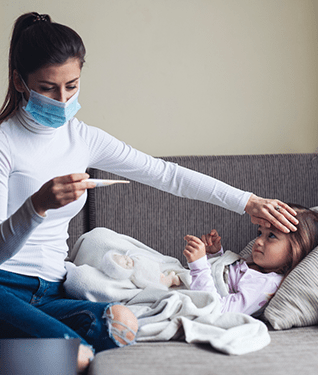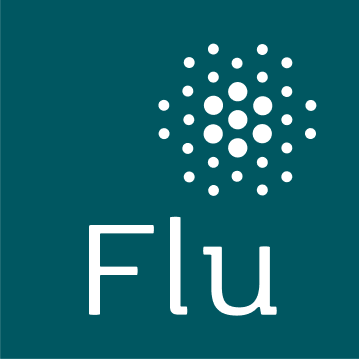Flu and COVID in Children: Can Flu Shots Affect Outcomes?
Young children may be susceptible to flu and COVID co-infections
Simultaneous infections with more than one respiratory virus (co-infections), such as the flu and respiratory syncytial virus (RSV), can occur in people of any age. However, recent studies and data analyses published since COVID-19 came into circulation have shown that children may be more susceptible to co-infections of COVID with other respiratory viruses, including influenza, than adults.
These co-infections tend to occur in children under five years old and can cause more severe illness than an infection from a single virus. One study published in January by the Centers for Disease Control and Prevention (CDC) found that children who were hospitalized for COVID and diagnosed with a respiratory virus co-infection were more likely to be less than five years old and require increased oxygen support or ICU admission. Co-infections among this young group of children were significantly associated with potentially more severe disease.
Given this, protecting children against respiratory viruses is especially important—and year in, year out, flu vaccines play an important role in protecting against influenza. But how much of an impact can previous flu vaccination have on children who develop the flu and COVID at the same time?
As it turns out, a report published by the CDC in December 2022 suggests that flu vaccines may be helpful in reducing severe outcomes in children under 18 years who develop flu and COVID at the same time.
Flu vaccination may be linked to better outcomes in co-infection cases
This report provides information on an analysis of 2021–2022 influenza data collected by the CDC on 575 children and adolescents who were hospitalized for influzenza. Co-infection with COVID occurred in 6% (32 of 575) of children hospitalized for the flu, and 16% (7 of 44) of patients with flu-associated deaths.
Compared to children who had the flu alone, children who had flu and COVID at the same time were more likely to require some form of mechanical ventilation (4% vs. 13%, respectively)—an indicator of potentially more severe illness. Antiviral medication for influenza was given to 53% of the 32 children who had flu and COVID co-infection, as well as 60% of the 543 children who had the flu alone.
Further analysis on influenza-associated deaths among these children highlighted the potential impact of flu vaccination. Thirty-seven of the 44 children who died were eligible to receive a flu vaccine and had data available. Of these 37 children, six had been co-infected with flu and COVID; none had received a flu vaccine. In contrast, 26 of the 31 children (84%) who died due to influenza alone had not received a flu vaccine.
While the analysis in this report involved a small number of flu and COVID co-infection cases, it calls attention to the limited use of influenza antiviral treatments and seasonal flu vaccines in children with the flu, especially among those children who had both flu and COVID. Given the worse outcomes seen among children who had flu and COVID co-infection in this analysis, disease prevention of respiratory illnesses in children should be a focus for caregivers in the fall, when many respiratory viruses typically begin to circulate in the Northern Hemisphere. Because vaccines are not available for all respiratory viruses, it’s even more important that all eligible children (and adults) get vaccinated for influenza and COVID. These vaccines can help prevent or provide protection against severe outcomes.
In cases when respiratory viral infection occurs, the frequent overlap between symptoms of various viruses may result in misdiagnosis unless testing is involved. Laboratory testing for flu, COVID, RSV, and other common viruses can help properly guide clinical treatment.
The 2021-2022 flu season was notable for the historically low levels of flu that circulated—and also for a rise in flu activity rather late in the season, during April 2022. High levels of flu and other respiratory viruses that have been in circulation during the current 2022‑2023 season have decreased across the country. However, the flu has been less predictable since the advent of COVID-19; since 2017, flu cases have peaked as many as two or even three times during the flu season. So if you or your loved ones—especially any children in your care—still need to be vaccinated against the flu this season, remember: It’s not too late to get a flu vaccine. Likewise, COVID vaccination may also help reduce the potential for severe illness in children.
In any case, should your child show signs of any respiratory illness, remember: Getting a test can help detect or rule out any co-infections, and subsequently help your clinician determine the most appropriate treatment plan.

